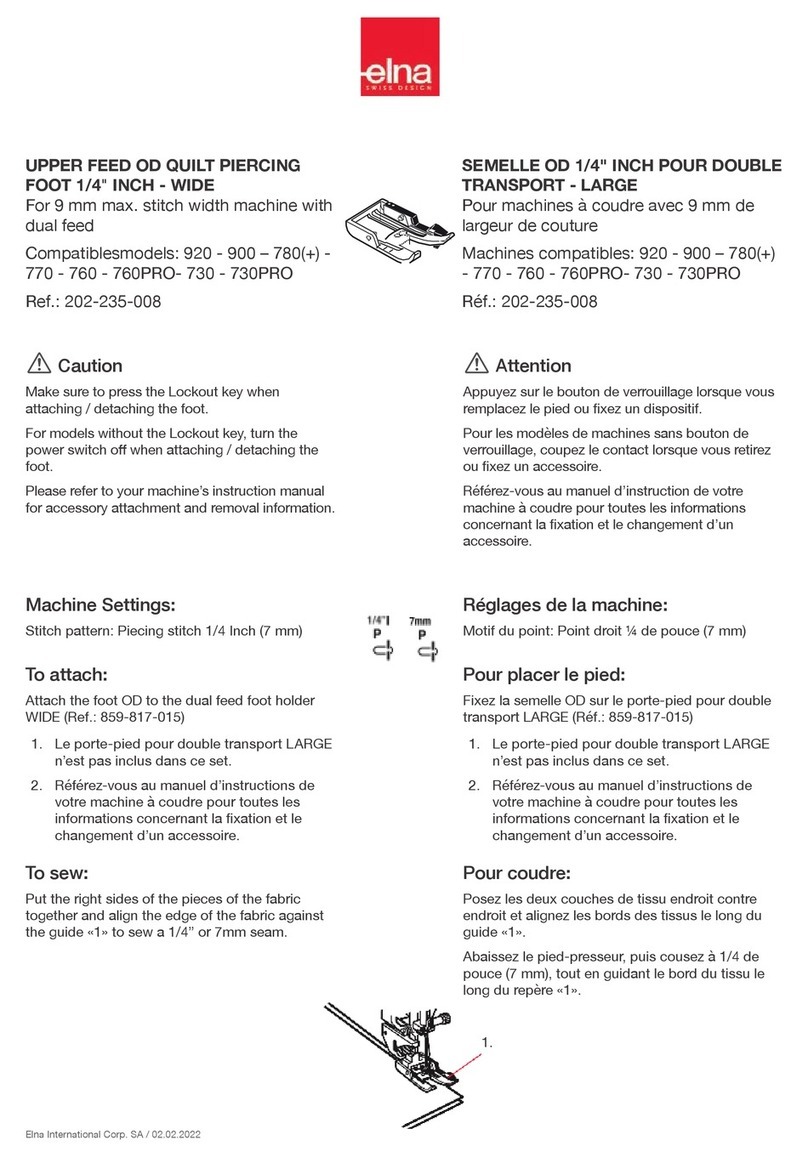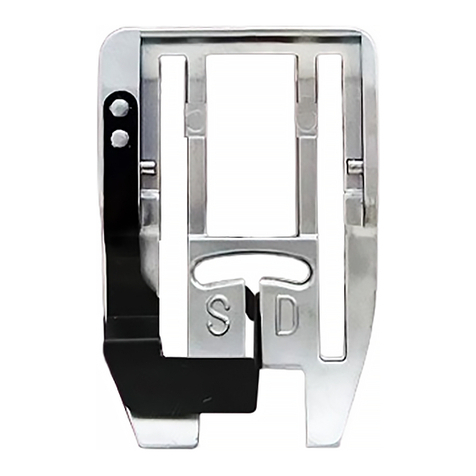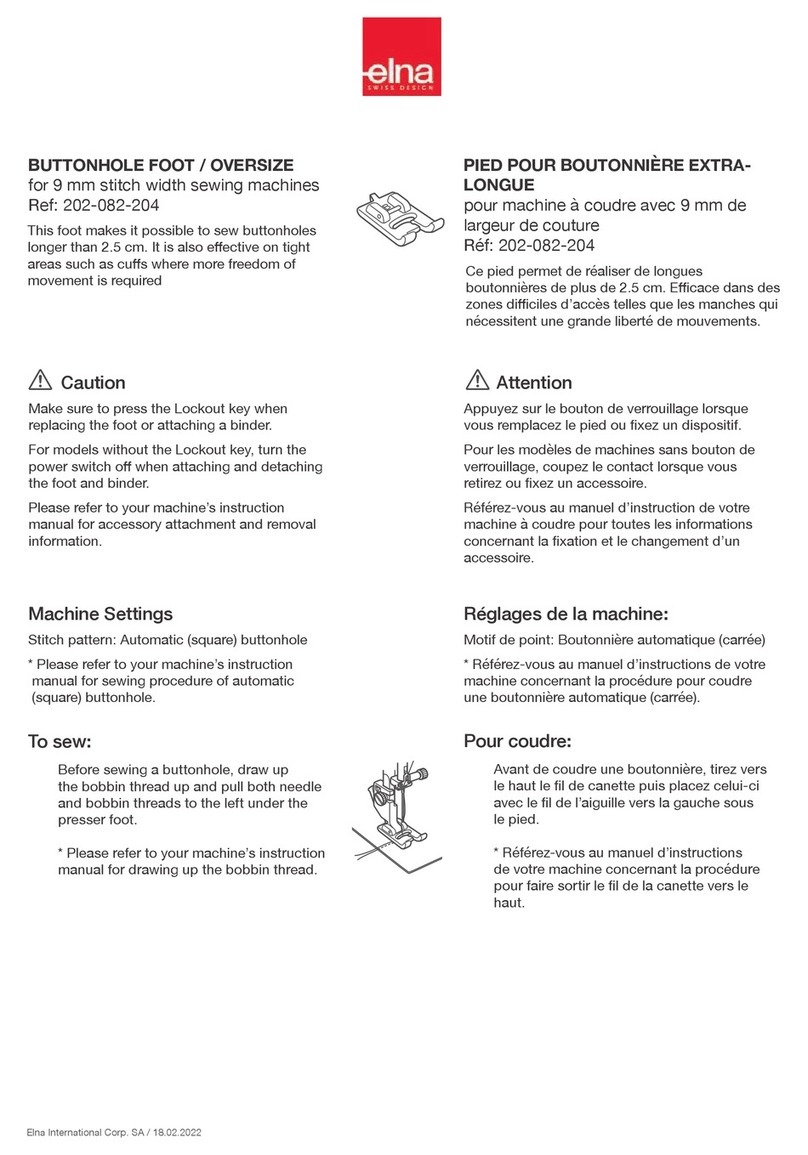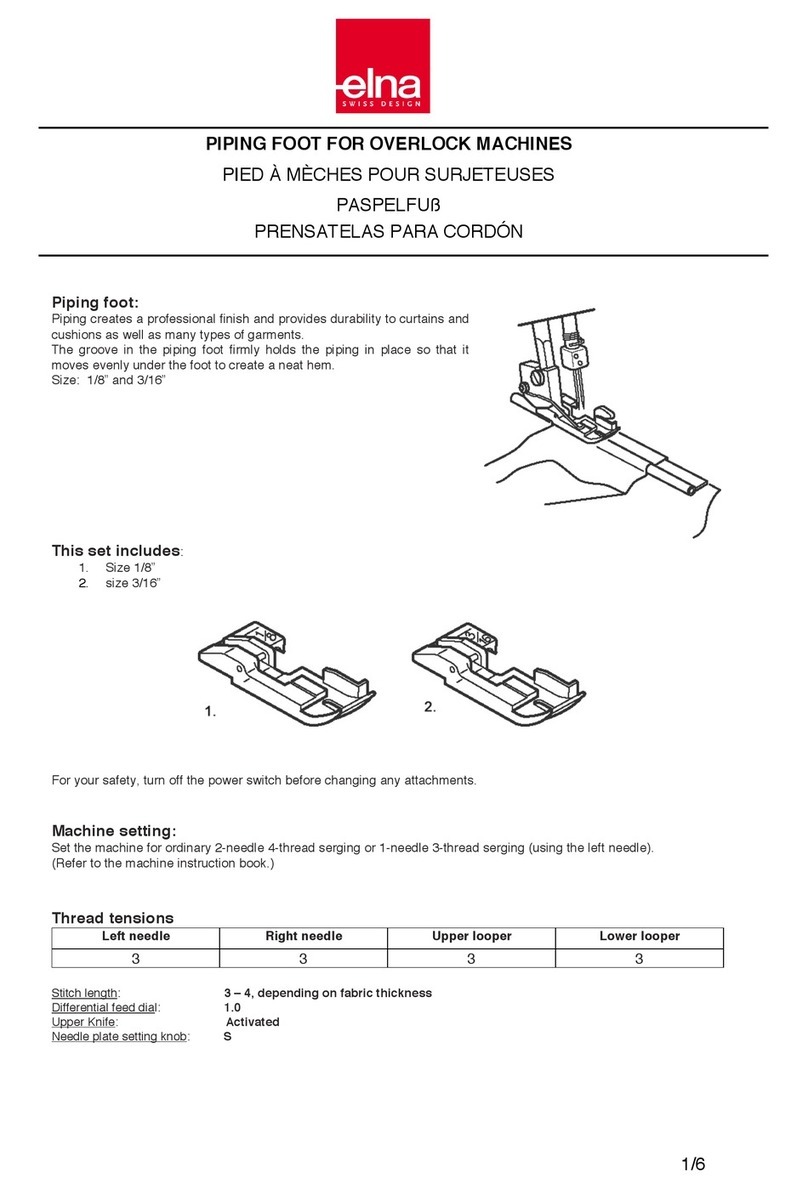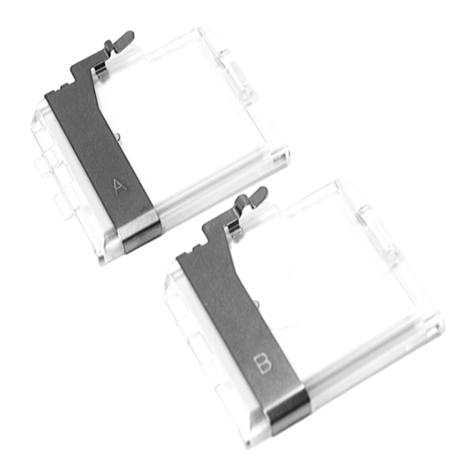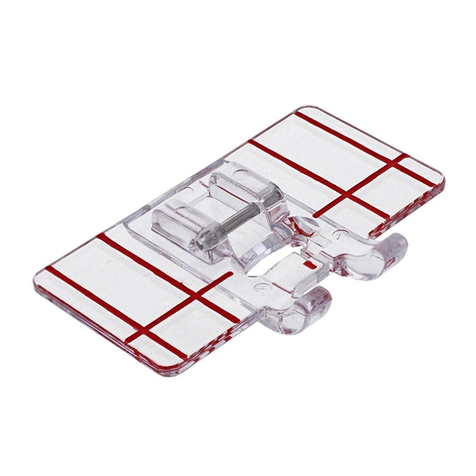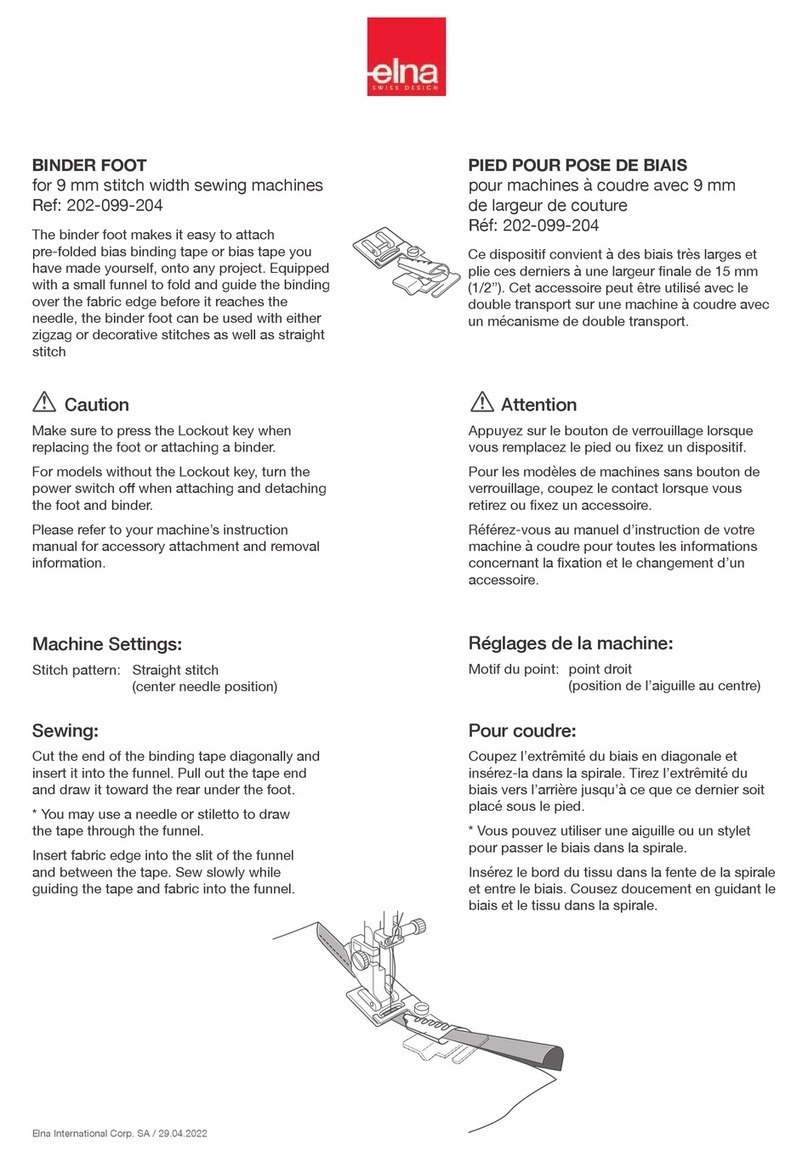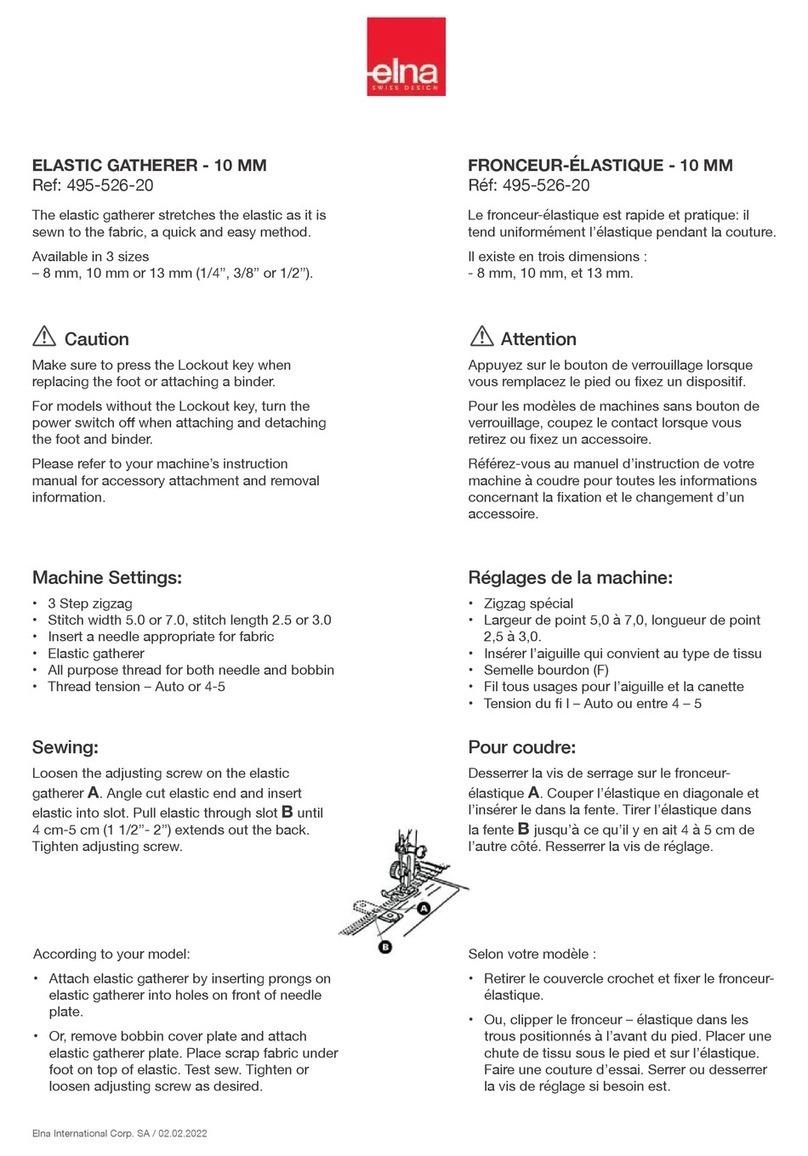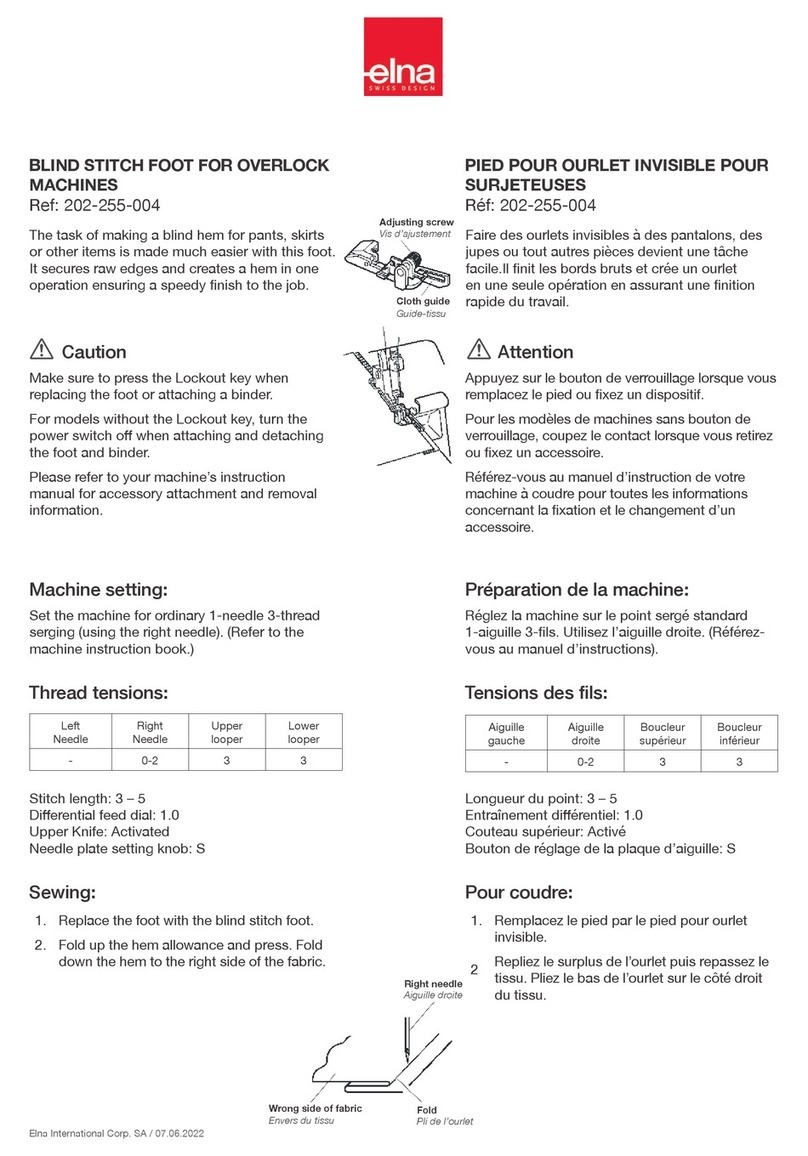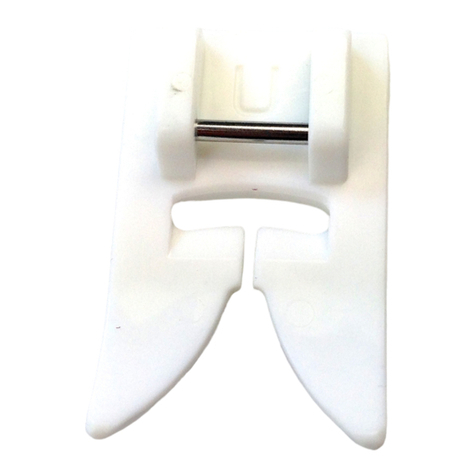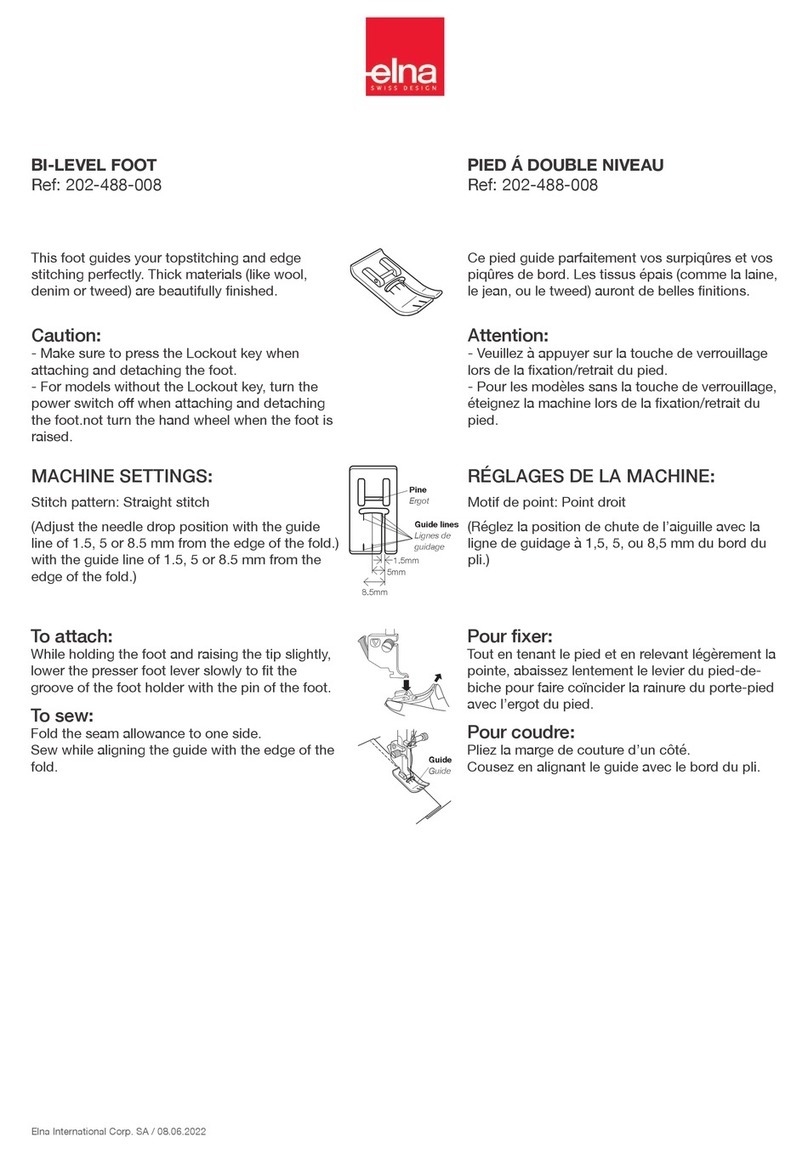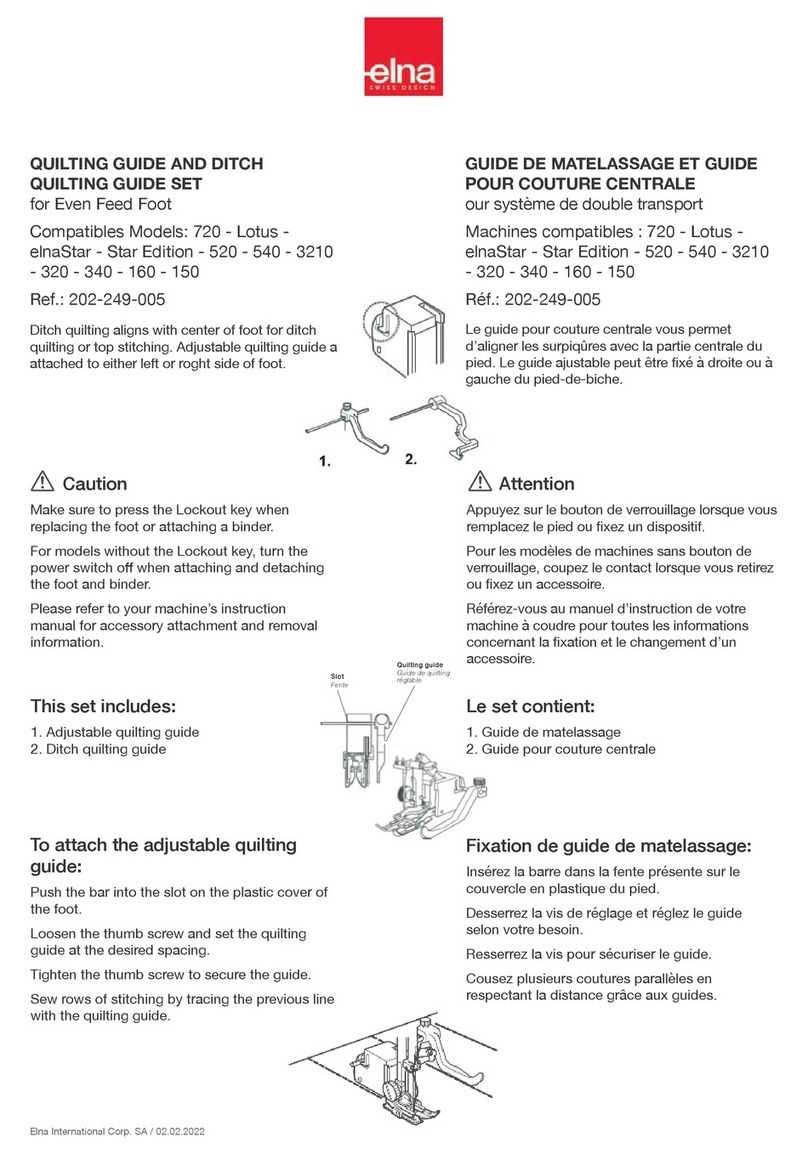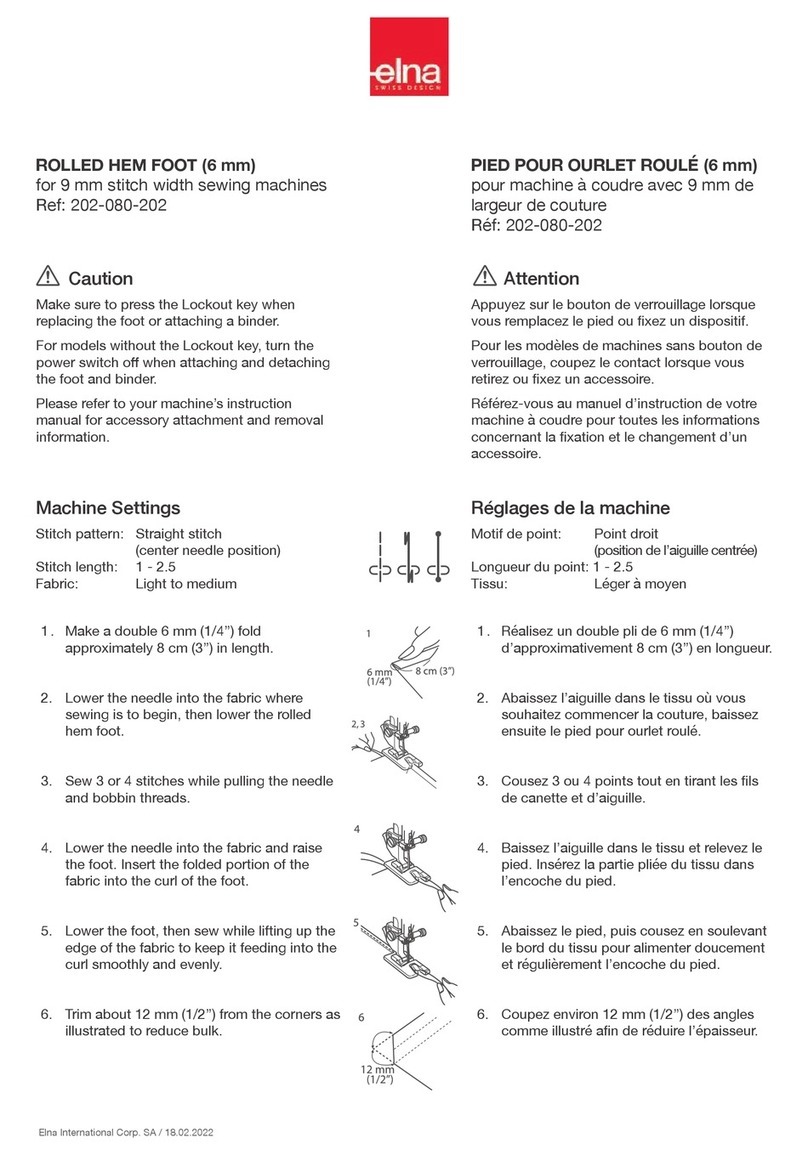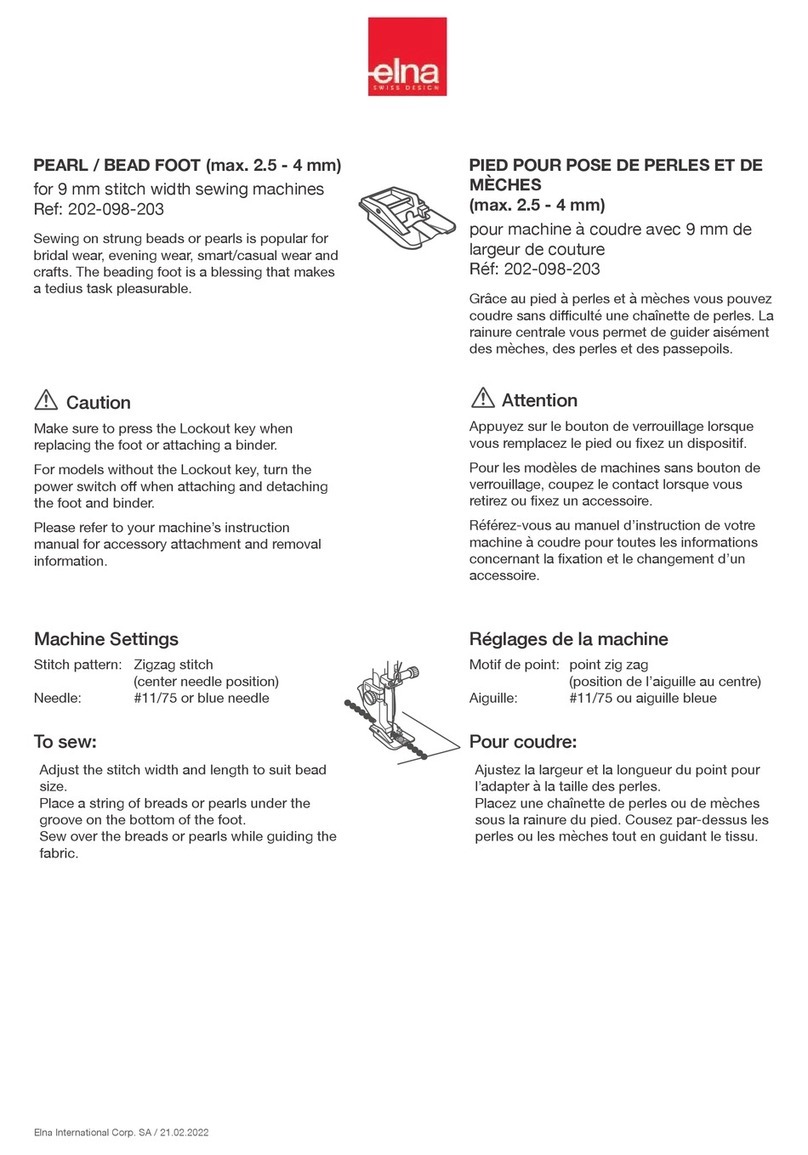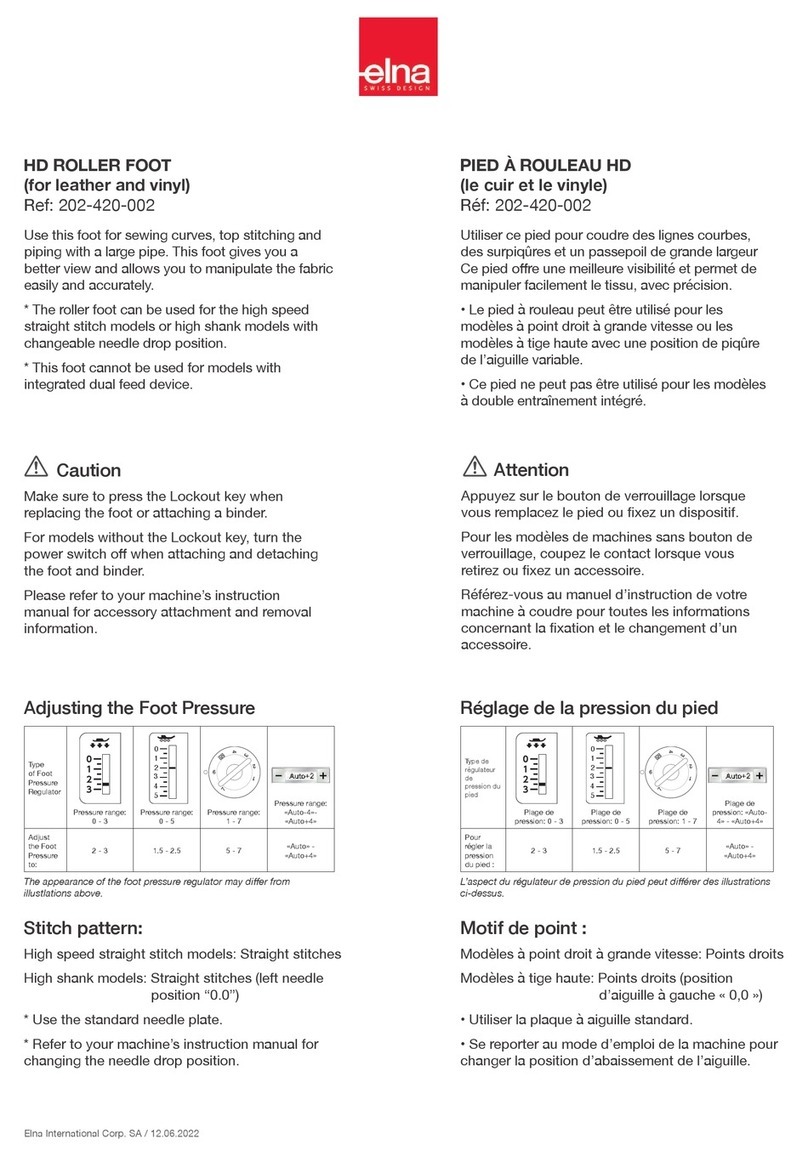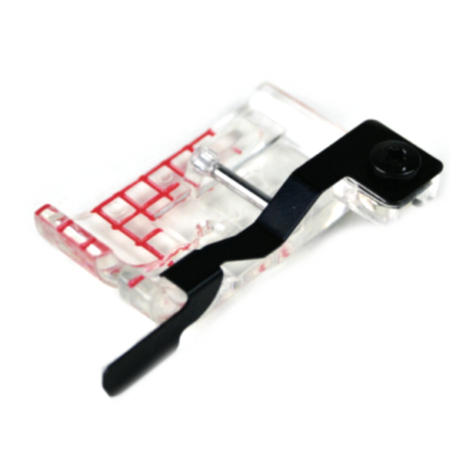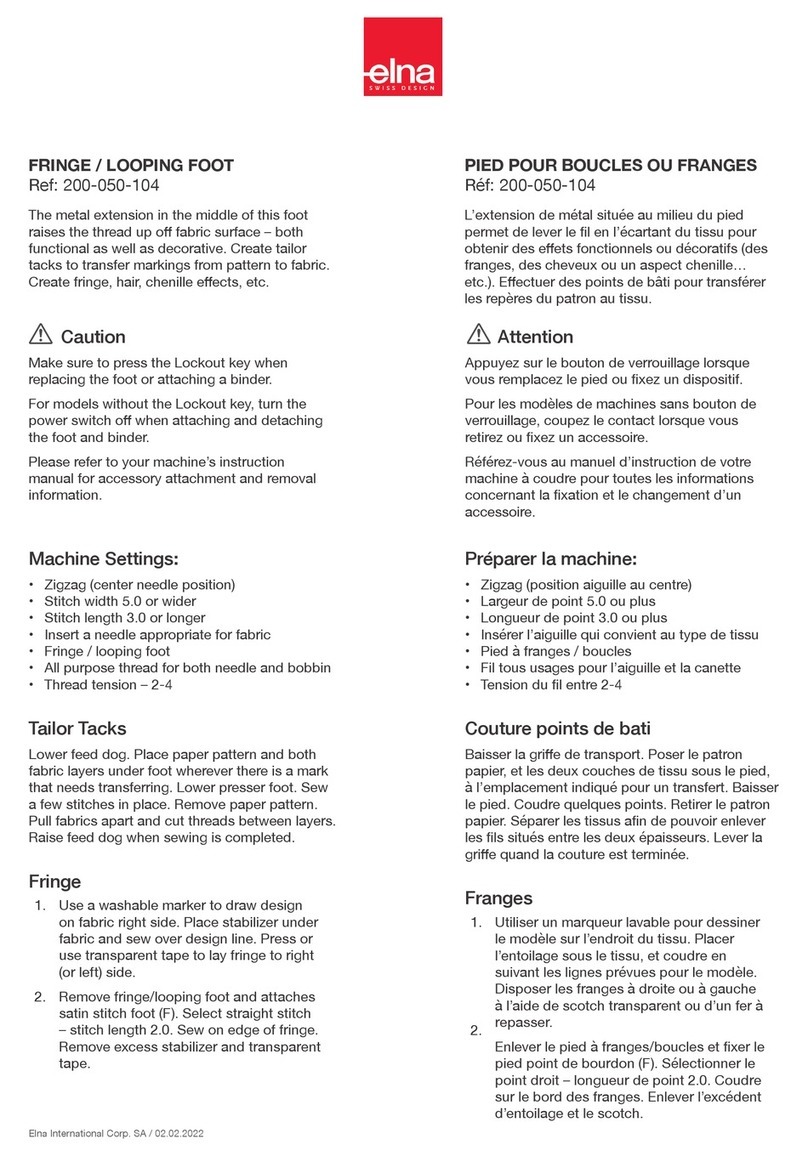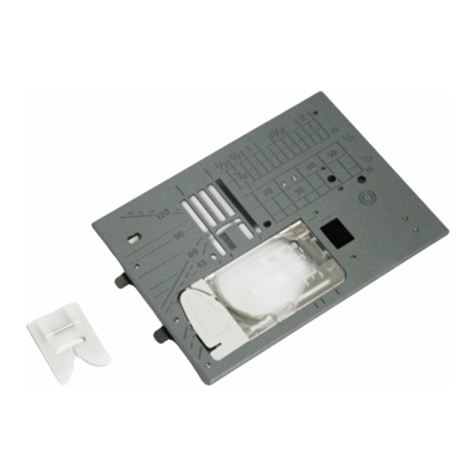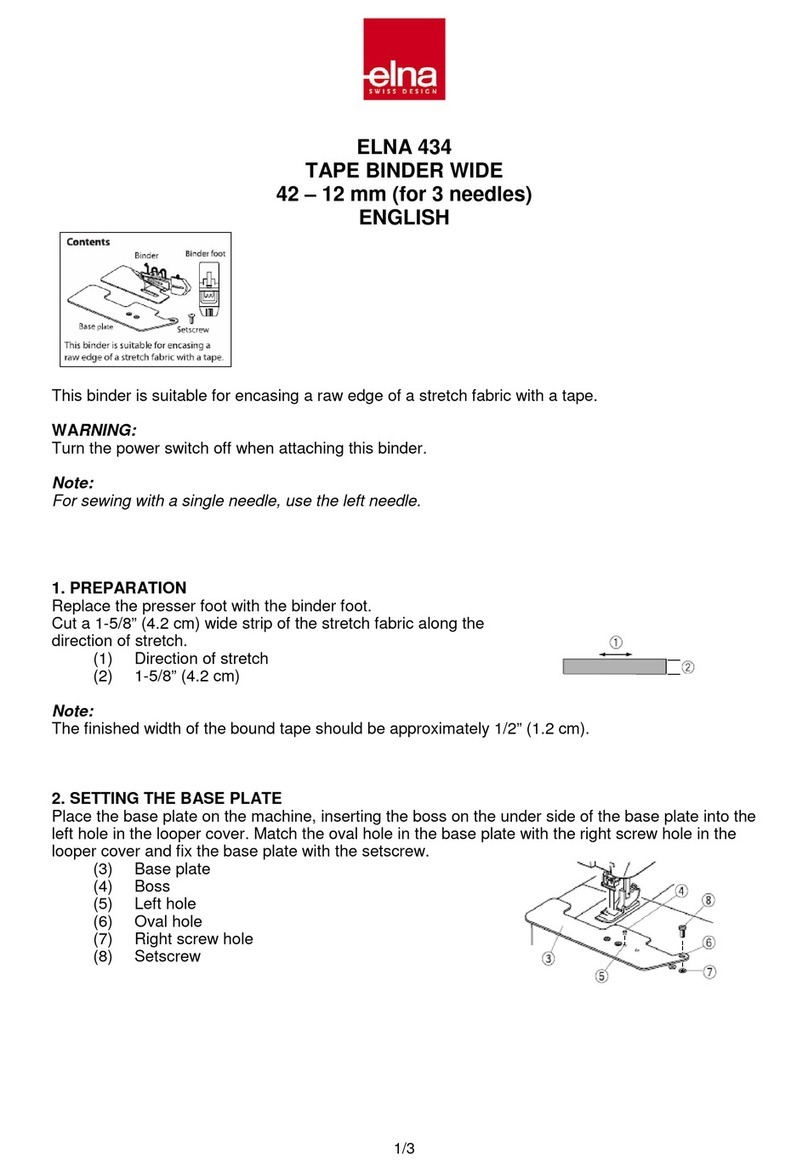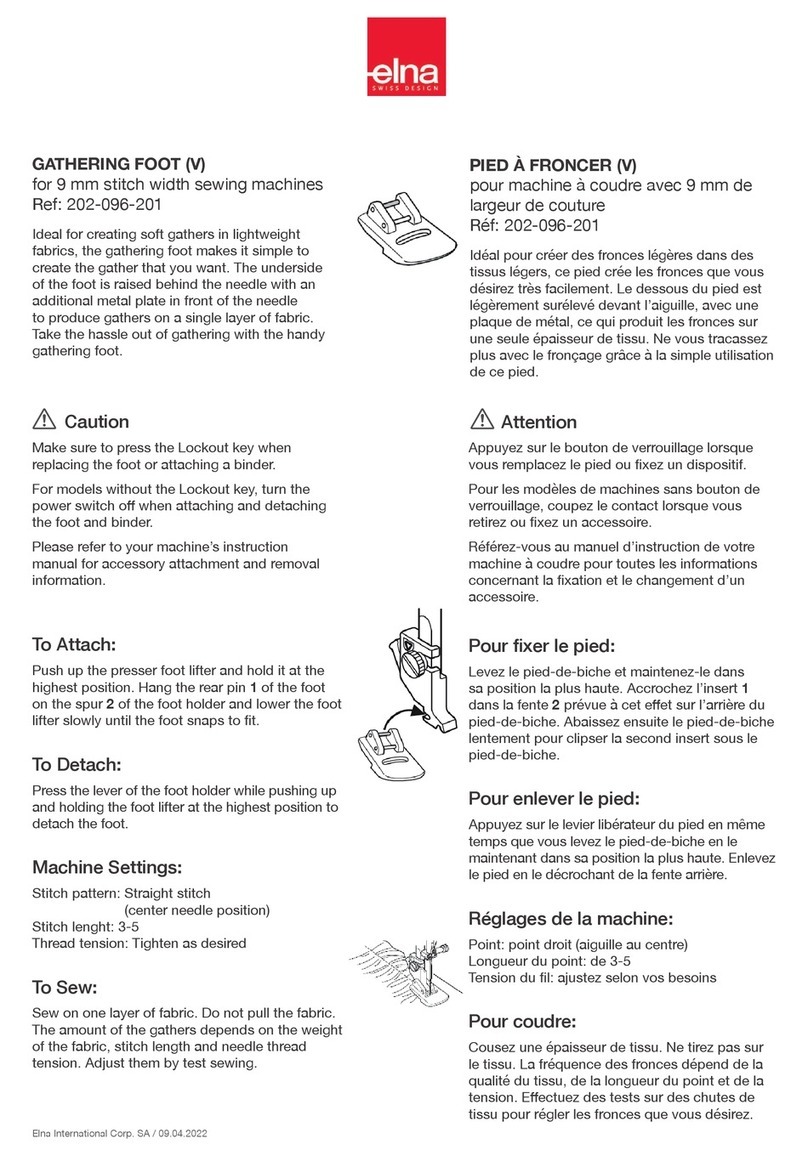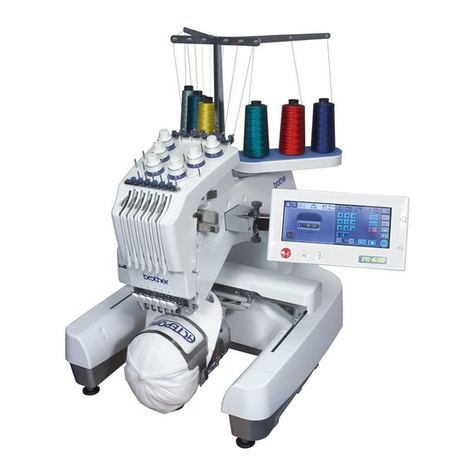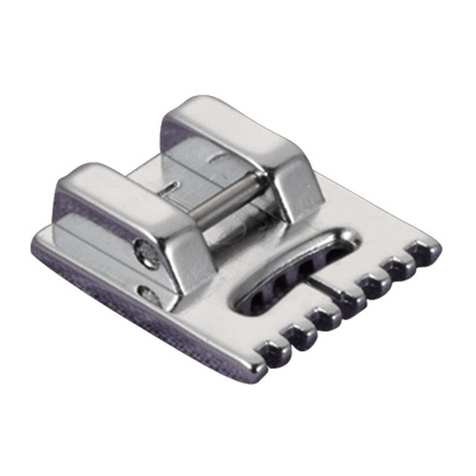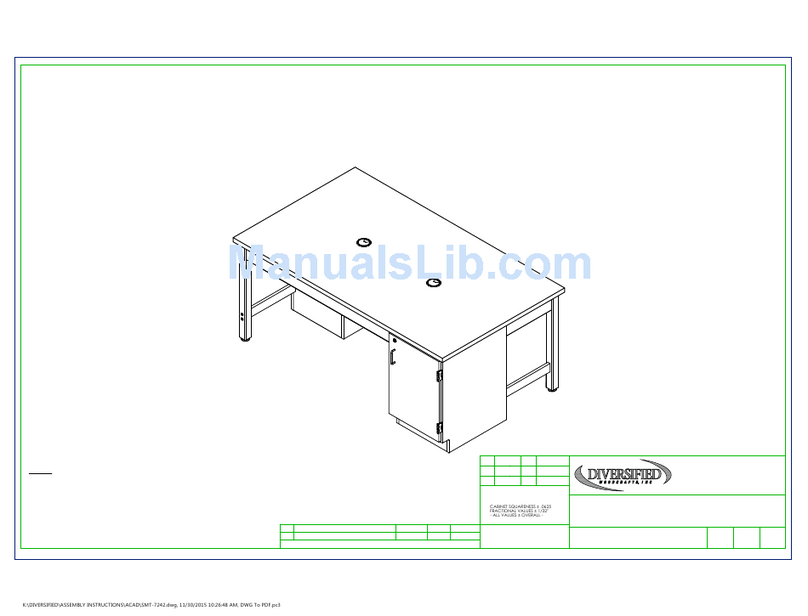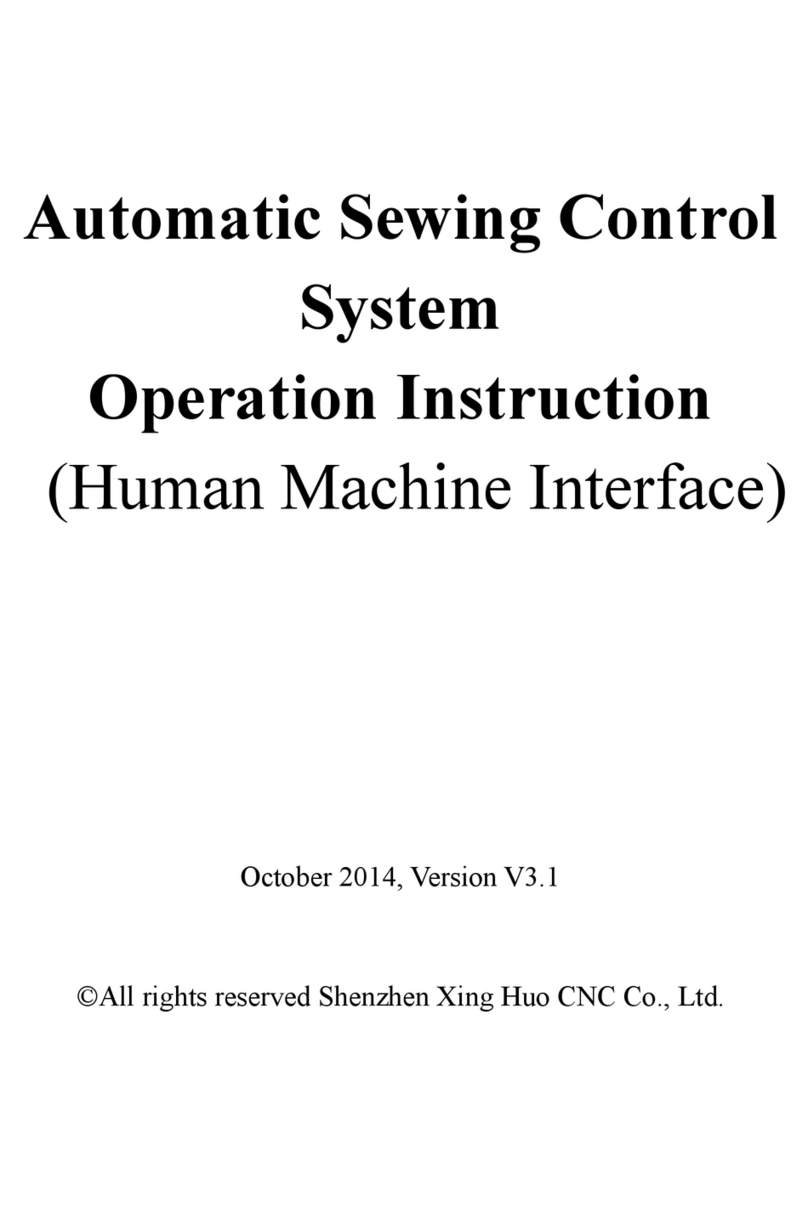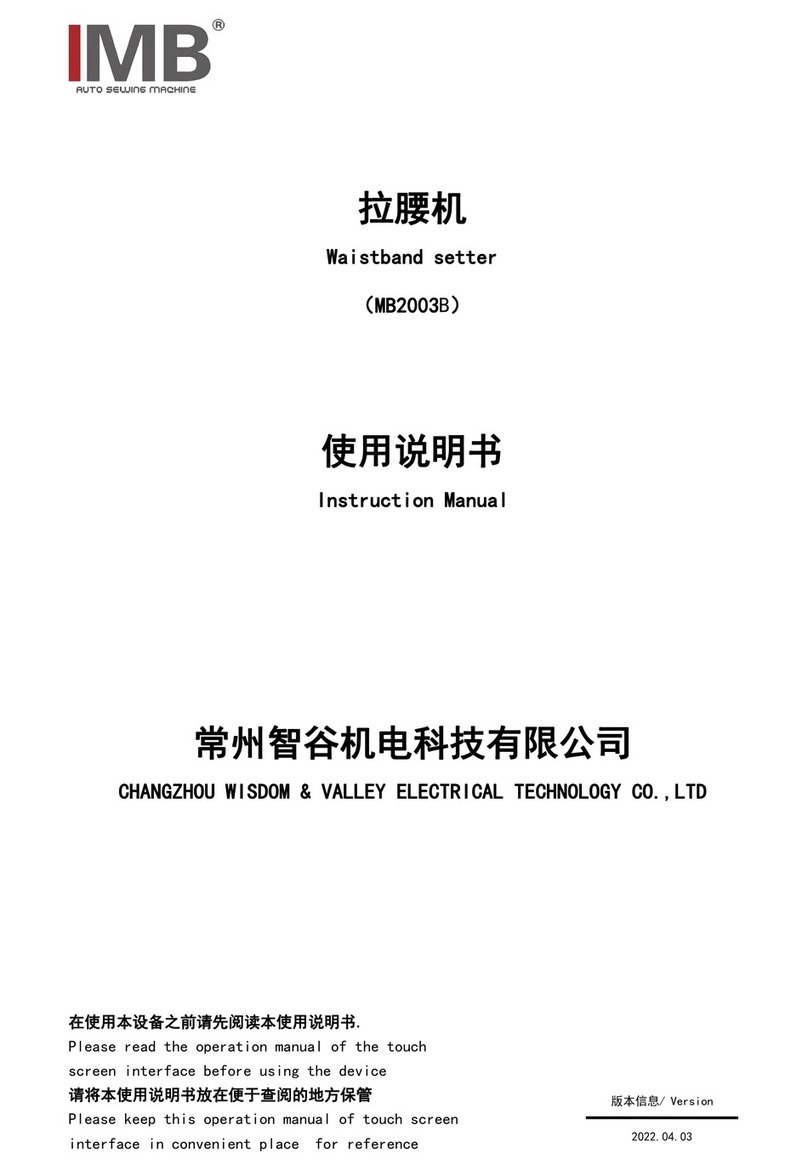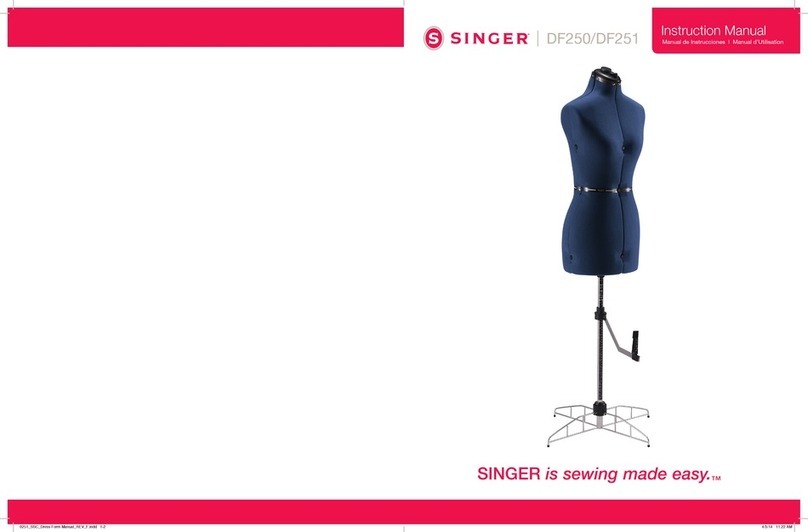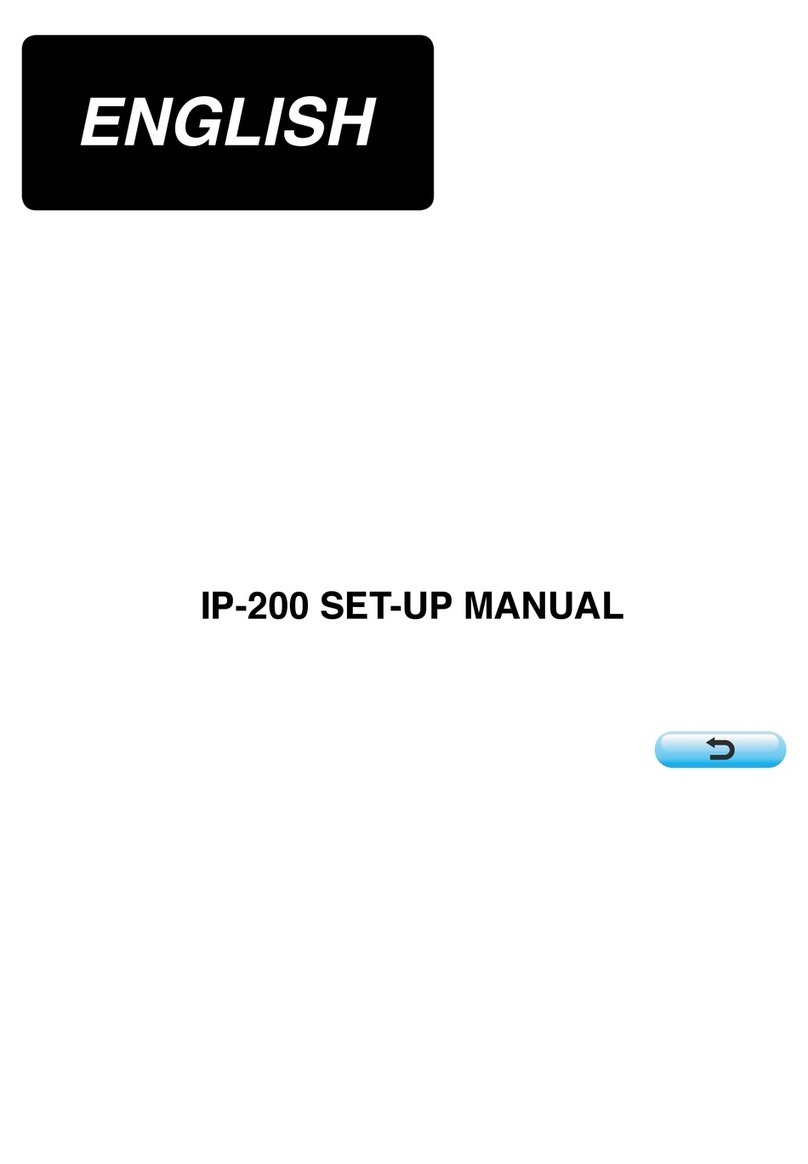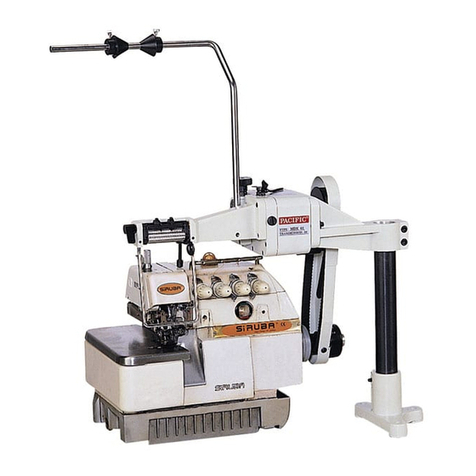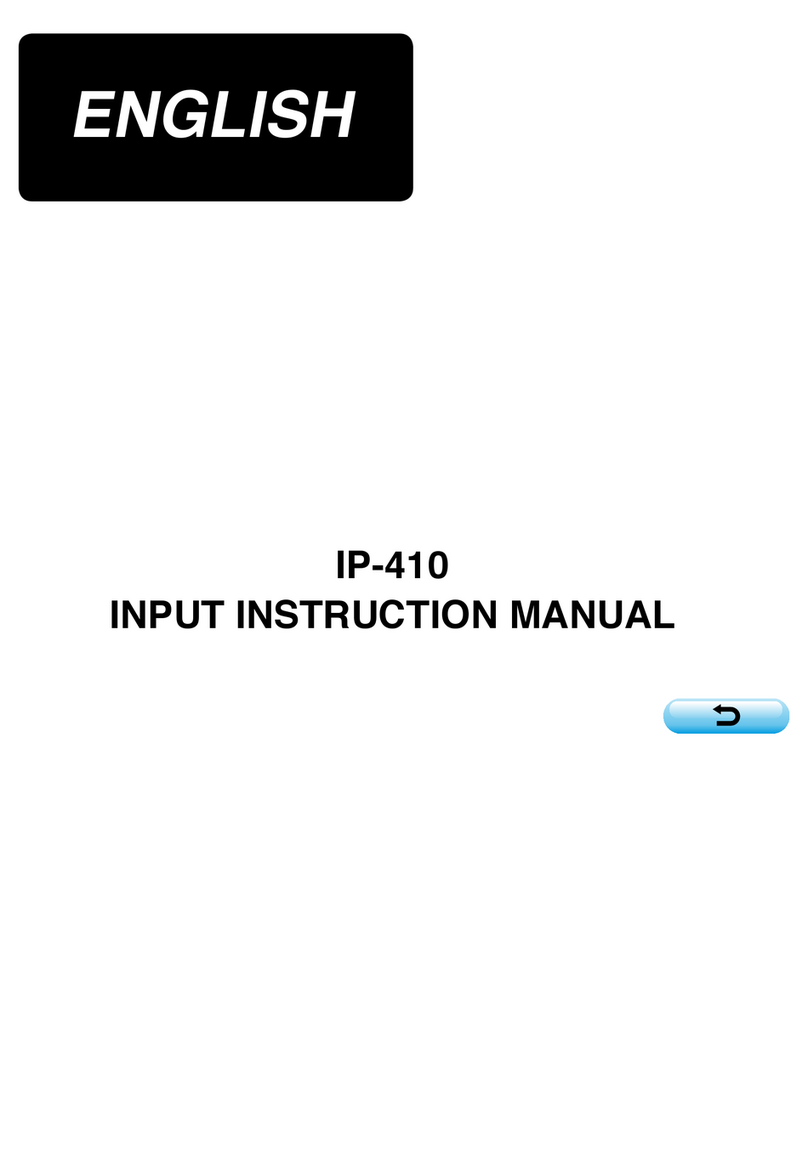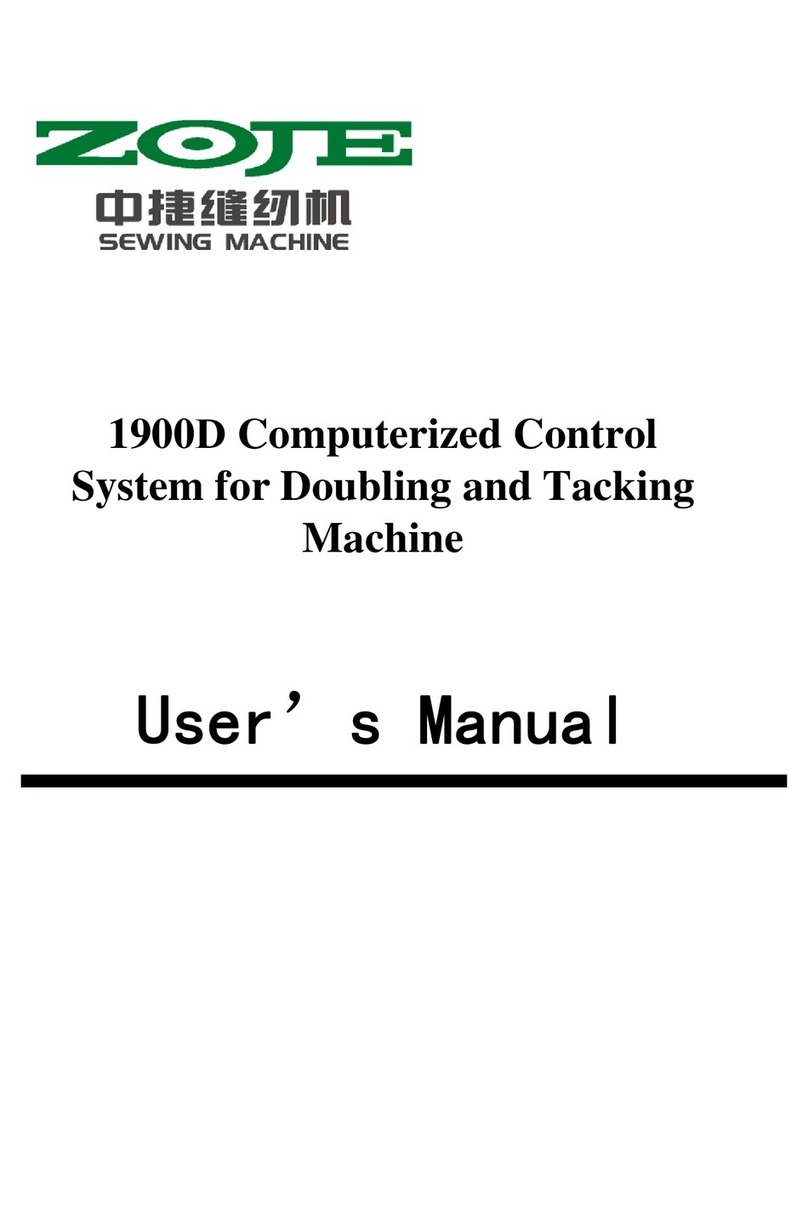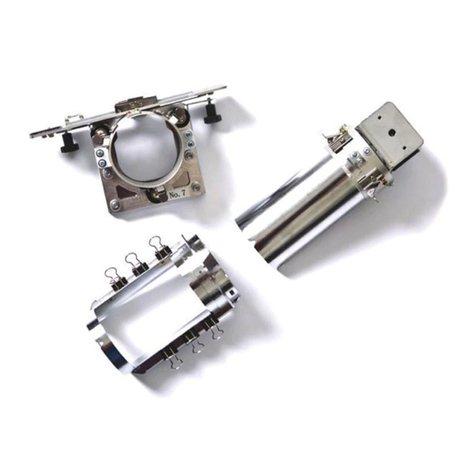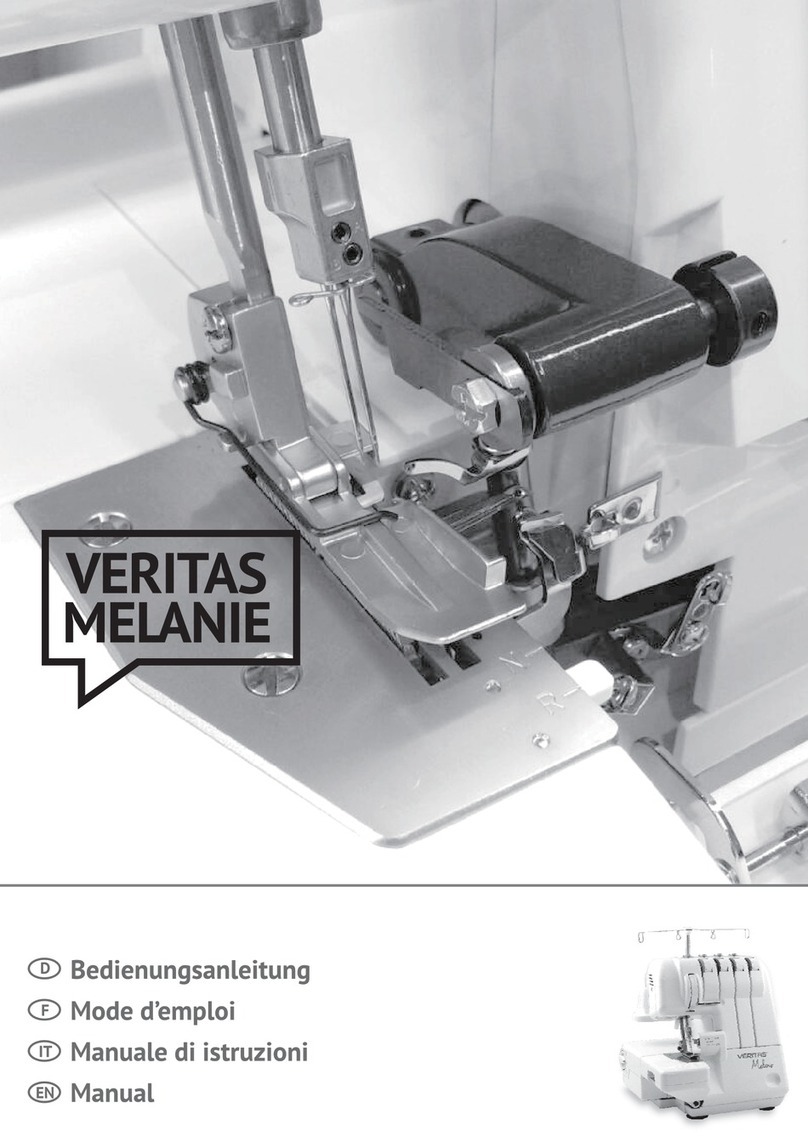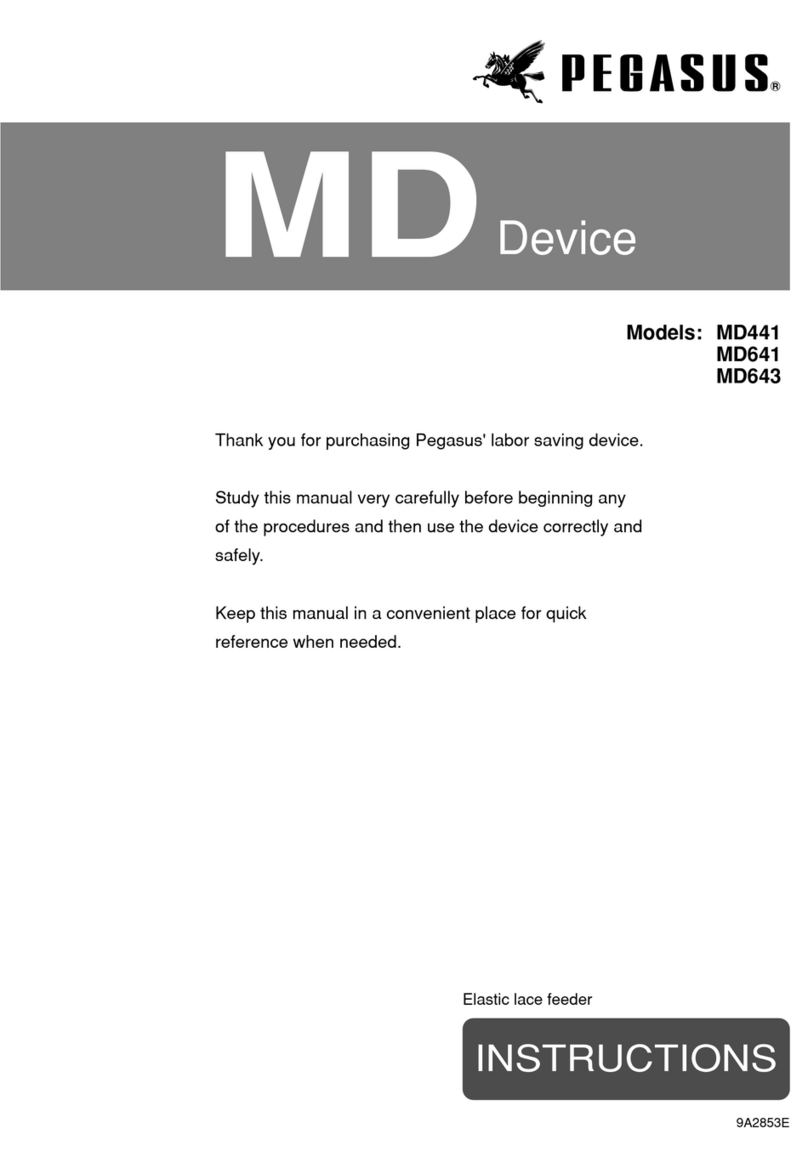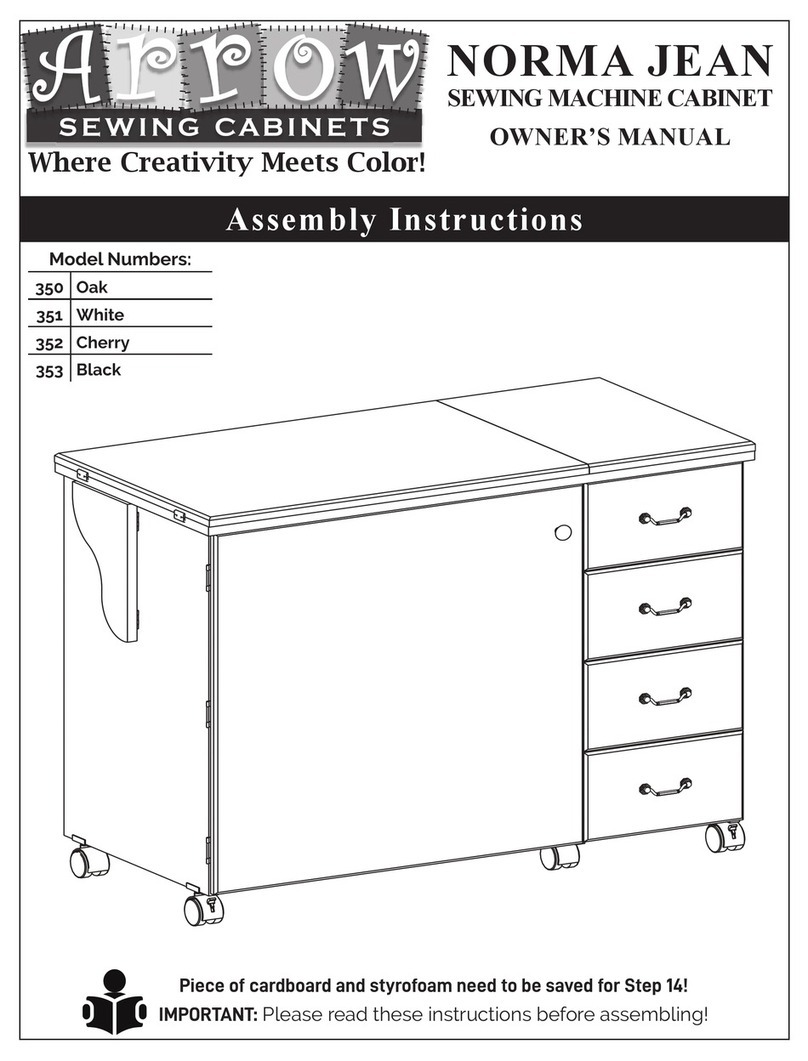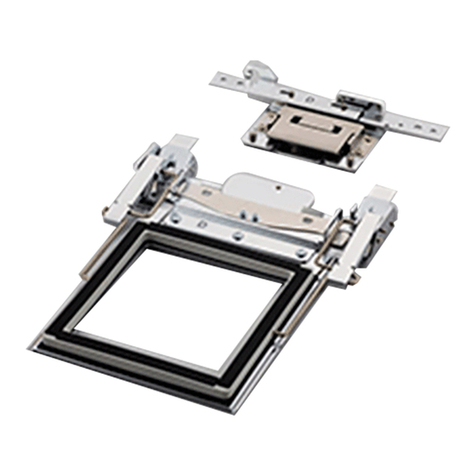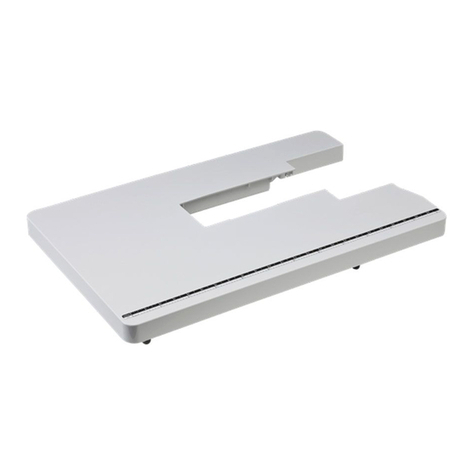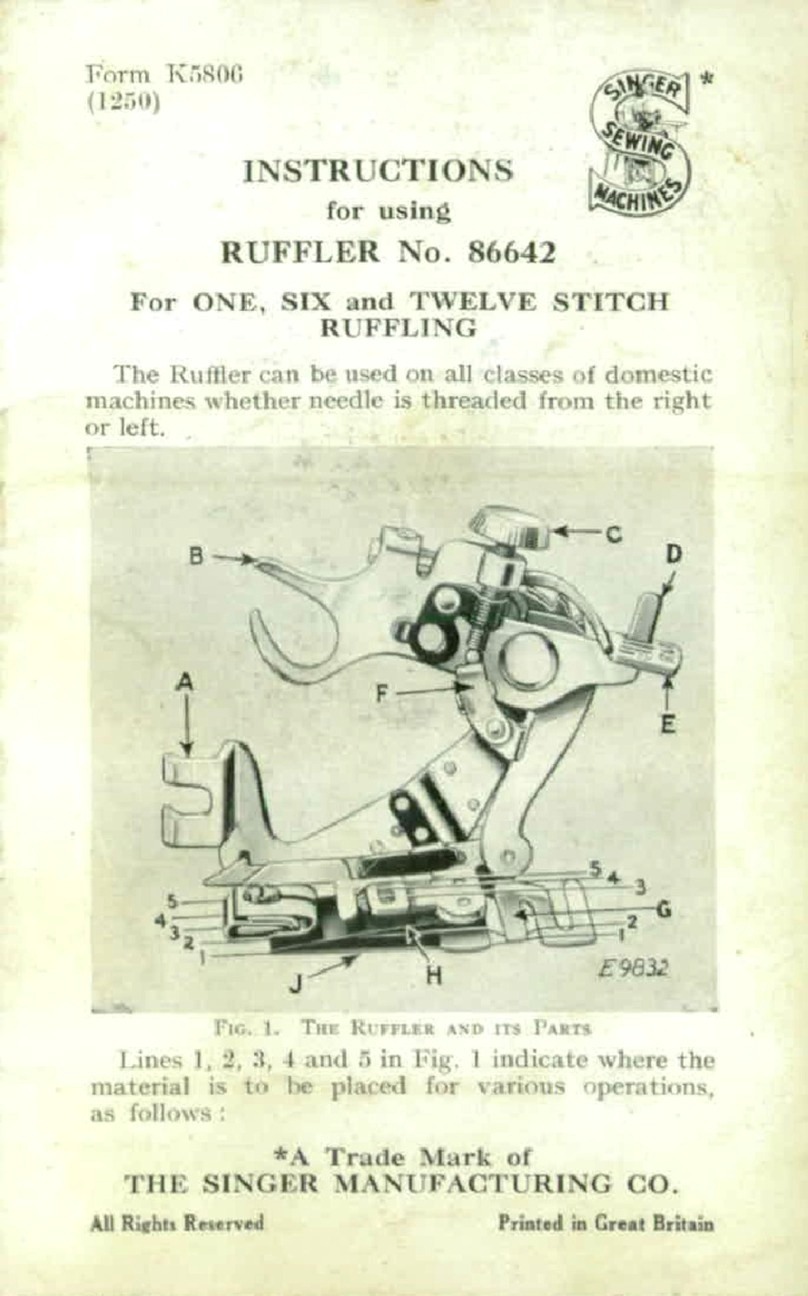
Elna International Corp. SA / 29.04.2022
Paspelfuß
Stellen Sie Ihre eigenen Paspeln her oder
verwenden Sie vorgefertigte Paspeln mit diesem
Fuß, um ein professionelles Finish zu erzielen.
• Stichmuster: Geradstich (mittlere
Nadelposition)
• Fadenspannung: Automatisch oder 3 - 5
• Stichlänge: 1 - 3
• Stichbreite: 0
Heben Sie die Nadel und den Paspelfuß an.
Legen Sie das geschnürte Paspelband zwischen
zwei Stostücke (rechte Seiten aufeinander) und
platzieren Sie alles zusammen unter dem Fuß.
Achten Sie darauf, dass die Kante des Bands mit
der Stokante ausgerichtet ist. Senken Sie den
Fuß ab, sodass der geschnürte Teil des Bandes in
die linke Nut unten am Fuß passt. Nähen Sie den
Sto und führen Sie das Band dabei wie gezeigt
durch die linke Nut.
Verdeckter Reißverschlussfuß
Hochwertige Bekleidung hat oft einen
nahtverdeckten Reißverschluss. Dieser Fuß
entrollt den Reißverschluss unmittelbar vor der
Nadel und ermöglicht so ein optimales Einnähen.
• Fadenspannung: Automatisch oder 4 - 5
• Stichlänge: 0.5 - 4
• Nähfußdruck: 3 - 5
1. Nähen Sie eine Heftnaht entlang der
Reißverschlussönung. Bereiten Sie einen
verdeckten Reißverschluss vor, der etwa 2 cm
länger ist als die tatsächliche Önung.
2. Heften Sie das Reißverschlussband am
Kleidungsstück an, bevor Sie mit der
Maschine nähen. Verwenden Sie beim Heften
ein dickes Blatt Papier, wie gezeigt.
3. Ziehen Sie die Fäden der mittleren Heftnaht
heraus und önen Sie den verdeckten
Reißverschluss. Nähen Sie die rechte und
linke Seite des Reißverschlusses mit dem
verdeckten Reißverschlussfuß an den Enden
der Reißverschlussönung an.
Prensatelas para ribete con cordón
Cree sus propios ribetes o aplique ribetes ya
hechos con este prensatelas para crear un
acabado de diseño profesional en proyectos o
prendas de decoración domésticas.
• Puntada: Puntada recta (posición de aguja al
centro)
• Tensión del hilo: Automático o 3-5
• Longitud de puntada: 1-3
• Anchura de puntada: 0
Levante la aguja y el prensatelas para ribete
con cordón, después coloque la cinta del ribete
encordado en el lado derecho de la tela debajo
del prensatelas.
Asegúrese de que el extremo de la cinta coincida
con el extremo de la tela. Baje el prensatelas de
modo que la parte encordada de la cinta encaje
en la hendidura izquierda de la parte inferior del
prensatelas. Cosa la cinta.
Prensatelas para cremalleras
invisibles
Las cremalleras invisibles se usan muy a menudo
en las prendas. El surco debajo del prensatelas
desenrolla la cremallera y permite su aplicación
sin dicultad.
• Tensión del hilo: Automático o 4-5
• Longitud de puntada: 0,5-4
• Presión del prensatelas: 3-5
1. Hilvane a lo largo de la abertura de la
cremallera. Prepare una cremallera oculta 2
cm más larga que el tamaño de la abertura
real.
2. Hilvane la cinta de la cremallera a la prenda
antes de coser a máquina. Al hilvanar, utilice
una hoja de papel grueso como se indica.
3. Saque las hebras de hilvanado centrales y
abra la cremallera oculta. Cosa los lados
derecho e izquierdo de la cremallera en los
extremos de la abertura de la cremallera.

